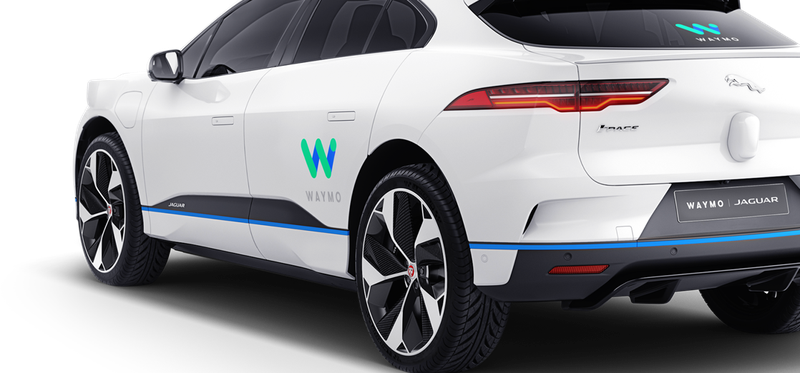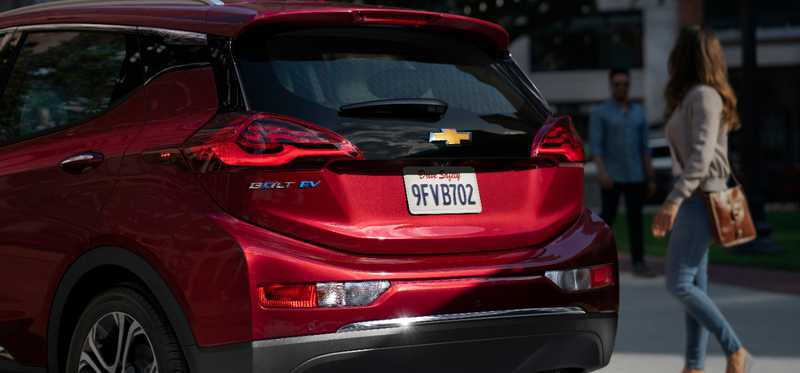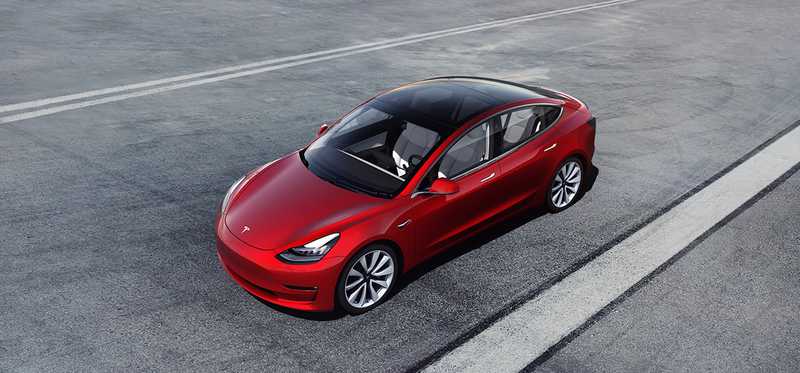5 Reasons to Invest in EV Stocks, 5 Reasons to Avoid Them

5 Reasons to Invest in EV Stocks, 5 Reasons to Avoid Them
Just a bubble or an auto revolution?
Led by Tesla (Nasdaq: TSLA), electric vehicle stocks have been among the biggest winners on the stock market this year. Despite the impact of the coronavirus pandemic, manufacturers of the environmentally-friendly vehicles have come into vogue as demand in China has been strong and investors are bullish on the prospects for EVs in the U.S. if Joe Biden wins the presidential election. Meanwhile, momentum towards renewable energy and EVs continues to build around the world.
Tesla stock is up nearly 400% this year. Chinese EV-maker Nio (NYSE: NIO) has gained about 250%, and stocks like Nikola (Nasdaq: NKLA) and Workhorse have surged as well.
Is this a bubble or are EV stocks really set to replace traditional combustion vehicles? Let's take a look at five reasons to buy EV stocks, and five reasons not to.
5 Winning Stocks Under $49
We hear it over and over from investors, “I wish I had bought Amazon or Netflix when they were first recommended by the Motley Fool. I’d be sitting on a gold mine!” And it’s true. And while Amazon and Netflix have had a good run, we think these 5 other stocks are screaming buys. And you can buy them now for less than $49 a share! Simply click here to learn how to get your copy of “5 Growth Stocks Under $49” for FREE for a limited time only.
Previous
Next

Reason to buy No. 1: The addressable market is huge
If EVs can successfully disrupt the auto market, the upside potential is huge. In the U.S., new car sales reached nearly $1 trillion last year. Globally, about 90 million new cars were sold last year, worth roughly $3 trillion.
By comparison, Tesla, the leader in EVs, is aiming for just 500,000 deliveries this year, less than 1% of the car market worldwide. Globally, just 2.6% of the auto market was electric vehicles last year, showing the enormous opportunity for EVs to grow by taking market share from gasoline-powered cars.
Previous
Next

Reason to buy No. 2: The technology is rapidly evolving
One of the reasons to bet on the disruption of EVs is that the technology keeps getting better, while there's little innovation taking place with internal combustion engines. Ranges are improving, batteries are getting cheaper and more efficient, prices are coming down, charging times are getting faster, and charging stations are popping up everywhere. According to a report from CleanTechnica, the average EV range for a car sold in the U.S. is expected to go from 190 last year to 275 in 2022 and 400 by 2028. Meanwhile, the introduction of cars like Tesla Model 3 is making EVs available to the mass market, and priced to be more accessible to younger customers, who tend to be more environmentally conscious.
All of those factors make the value proposition of electric vehicles more appealing, and make it more likely that they will continue taking market share from ICE (internal combustion engine) vehicles.
Previous
Next

Reason to buy No. 3: It's socially and environmentally responsible
While social responsibility may not necessarily seem like a good financial reason to buy a stock, many investors prefer to own companies that meet environmental, social, and governance (ESG) standards.
In fact, ESG funds have outperformed the market this year, and are raking in billions in new investments as investors embrace the concept.
There are other advantages to owning ESG stocks like EVs. Regulators tend to look more favorably on them, which is why EV subsidies have been available in a number of countries, and such incentives could see a boost in the U.S. under a Biden administration.
Additionally, companies and other institutions are increasingly committing themselves to being environmentally responsible.
Previous
Next

Reason to buy No. 4: We could be at the beginning of an S-curve
According to classic business theory, new technologies tend to be adopted in a time sequence resembling an S-curve. In other words, while it may take years for a new technology to establish itself in the market, once a certain percentage of the population begins to embrace it, generally early adopters, adoption tends to accelerate and a majority of consumers will soon use it.
Technologies like flat-screen TVs or smartphones have generally followed this pattern, and this could prove the case with electric vehicles. While growth has been erratic, driven by subsidies at times, and the pandemic has soured 2020 results, the technology could soon reach an inflection point where it goes mainstream and sales skyrocket.
5 Winning Stocks Under $49
We hear it over and over from investors, “I wish I had bought Amazon or Netflix when they were first recommended by the Motley Fool. I’d be sitting on a gold mine!” And it’s true. And while Amazon and Netflix have had a good run, we think these 5 other stocks are screaming buys. And you can buy them now for less than $49 a share! Simply click here to learn how to get your copy of “5 Growth Stocks Under $49” for FREE for a limited time only.
Previous
Next

Reason to buy No. 5: Companies are embracing it
At one point, electric vehicles may have only been for the hobbyist or the luxury car collector, but one big sign that they are going mainstream is that corporations are rapidly warming up to the concept.
Amazon last year ordered 100,000 electric delivery vans from Rivian as part of its plan to go carbon-neutral.
Lyft has pledged to have 100% of the vehicles on its platform be electric by 2030, and Uber is also providing incentives to some drivers to switch to electric vehicles.
A number of other companies, including tech giants like Apple and Alphabet have pledged to go carbon-neutral, and Walmart is aiming to reduce its carbon emission by 1 billion tons.
Supporting electric vehicles is likely to play a major role in meeting those goals.
Previous
Next

Reason to avoid No. 1: The stocks could be in a bubble
EV stocks have run up so far this year that so much growth is now priced into the stocks. Arguably, the sector is in a bubble. Tesla, for example, is up nearly 800% over the past year, and now worth $400 billion, even though not that much has changed fundamentally with the company in that time. Though it's escaped bankruptcy fears and has delivered consistent profits, its expected growth trajectory is still roughly the same.
Similarly, Nikola was valued at more than Ford at one point, one of the world's biggest auto manufacturers, even though Nikola has never actually manufactured a vehicle.
That traditional auto stocks trade at low valuations also underscores a truism of the industry: auto manufacturing is competitive and therefore margins are generally low. Even for Tesla, unless it expands into new industries, it will be difficult for it to generate the kind of profits that justify a valuation of $400 billion or higher.
Previous
Next

Reason to avoid No. 2: The transition will take a long time
Even if EVs eventually displace gas-powered cars, the transition will likely take decades. Cars are durable goods, and the average age of a car on the road in the U.S. is 12 years, meaning it would take at least 12 years to cycle through the cars currently being driven.
What matters most for electric vehicles is new car sales, but new cars compete with used cars, which is a bigger market. Consumers switching to EVs en masse would likely make the price of used cars cheaper, making a quick transition unlikely.
Additionally, demand for traditional car infrastructure will continue to be higher than for EVs. While gas stations could eventually become EV charging stations, that's unlikely to happen until demand reaches a tipping point, which won't be for at least several years, limiting the need to switch over.
Previous
Next

Reason to avoid No. 3: Other auto revolutions haven't panned out
This isn't the first time investors have been jazzed about disruptive technology in the auto sector. Early in the 2010's, natural gas prices were plunging and investors were anticipating a world where cleaner-burning natural gas fuels were more common. They bid up stocks like Clean Energy Fuels, which operates natural gas filling stations, and Westport Fuel Systems, a maker of natural gas engines. However, natural gas prices started recovering in 2012. The changeover never materialized and both stocks crashed.
Similarly, just a few years ago, the market was abuzz with hype over autonomous vehicles, which attracted investors to Uber, Lyft, Tesla, and others. Some analysts expected 10 million self-driving cars to be on the road by this year, but the technology has proven more challenging than expected. The AV revolution has yet to materialize and investors have mostly moved on. For example, Alphabet's Waymo, widely regarded as the leader in AVs, was estimated to be worth $175 billion in 2018, but raised money earlier this year at a valuation of just $30 billion.
While that doesn't mean that EVs won't be successful, it shows that hype and great expectations are not a guarantee of success.
Previous
Next

Reason to avoid No. 4: There are still significant obstacles
Owning an electric vehicle still isn't as easy as a gas-powered vehicle. Charging stations aren't always easy to find in rural areas, and installing your own charging port at home can be expensive. Home-charging isn't an option for Americans who have to park on the street or in a public garage.
While the infrastructure is improving, those limitations are likely to dissuade at least some car-buyers from purchasing an EV. Though it's generally cheaper to fill up an EV, costs for home installation can offset those savings, and with gas prices down that difference has been minimized.
Over the longer term, preferences for EVs could lower demand for gas. Helping to keep gasoline prices down in a negative feedback loop like that makes ICE cars more affordable by comparison, similar to what might happen with used cars.
5 Winning Stocks Under $49
We hear it over and over from investors, “I wish I had bought Amazon or Netflix when they were first recommended by the Motley Fool. I’d be sitting on a gold mine!” And it’s true. And while Amazon and Netflix have had a good run, we think these 5 other stocks are screaming buys. And you can buy them now for less than $49 a share! Simply click here to learn how to get your copy of “5 Growth Stocks Under $49” for FREE for a limited time only.
Previous
Next

Reason to avoid No. 5: Traditional automakers want in
There's also a scenario where electrical vehicles take over the market, but EV stocks don't end up performing that well. That's because traditional automakers like General Motors, Volkswagen, Nissan, and others have already begun making their own EVs, spying an opportunity in the market.
While Tesla is the leader in the market and has a head start over its competitors, the gap could easily narrow in the coming years, especially as traditional manufacturers have scale advantages that would allow them to more easily ramp up production to meet growing demand for EVs, compared to a company like Tesla or a start-up.
Though Tesla has a number of advantages over incumbents, including its supercharger network and battery technology, competitors like GM and Ford aren't about to give up the EV market without a fight.
ALSO READ: General Motors Reaffirms Focus on EVs; Over 40% of New China Vehicles to Be Electric
Previous
Next

A red hot market
Investor euphoria over electric vehicle stocks may be best exhibited by Tesla shares spiking nearly 50% merely on the announcement of an upcoming stock split. The split does nothing to change the value of the stock, though it does make it easier to buy and increases the chances that Tesla could be added to the Dow Jones Industrial Average.
EV stocks have caught fire with Robinhood traders and others looking to ride the recent momentum.
There's certainly a lot of potential for the sector if it can continue disrupting traditional automobiles, but the risk of a pullback or a bubble bursting shouldn't be underestimated.
2020 has been an unpredictable year for investors, and like a lot of the market, EV stocks offer both high risk and high reward at this point.
John Mackey, CEO of Whole Foods Market, an Amazon subsidiary, is a member of The Motley Fool’s board of directors. Suzanne Frey, an executive at Alphabet, is a member of The Motley Fool’s board of directors. Jeremy Bowman owns shares of Amazon and Ford. The Motley Fool owns shares of and recommends Alphabet (A shares), Amazon, Apple, and Tesla. The Motley Fool recommends Clean Energy Fuels and Uber Technologies and recommends the following options: short January 2022 $1940 calls on Amazon and long January 2022 $1920 calls on Amazon. The Motley Fool has a disclosure policy.
Previous
Next
Invest Smarter with The Motley Fool
Join Over Half a Million Premium Members Receiving…
- New Stock Picks Each Month
- Detailed Analysis of Companies
- Model Portfolios
- Live Streaming During Market Hours
- And Much More
READ MORE
HOW THE MOTLEY FOOL CAN HELP YOU
-
Premium Investing Guidance
Market beating stocks from our award-winning service
-
The Daily Upside Newsletter
Investment news and high-quality insights delivered straight to your inbox
-
Get Started Investing
You can do it. Successful investing in just a few steps
-
Win at Retirement
Secrets and strategies for the post-work life you want.
-
Find a Broker
Find the right brokerage account for you.
-
Listen to our Podcasts
Hear our experts take on stocks, the market, and how to invest.
Premium Investing Services
Invest better with The Motley Fool. Get stock recommendations, portfolio guidance, and more from The Motley Fool's premium services.